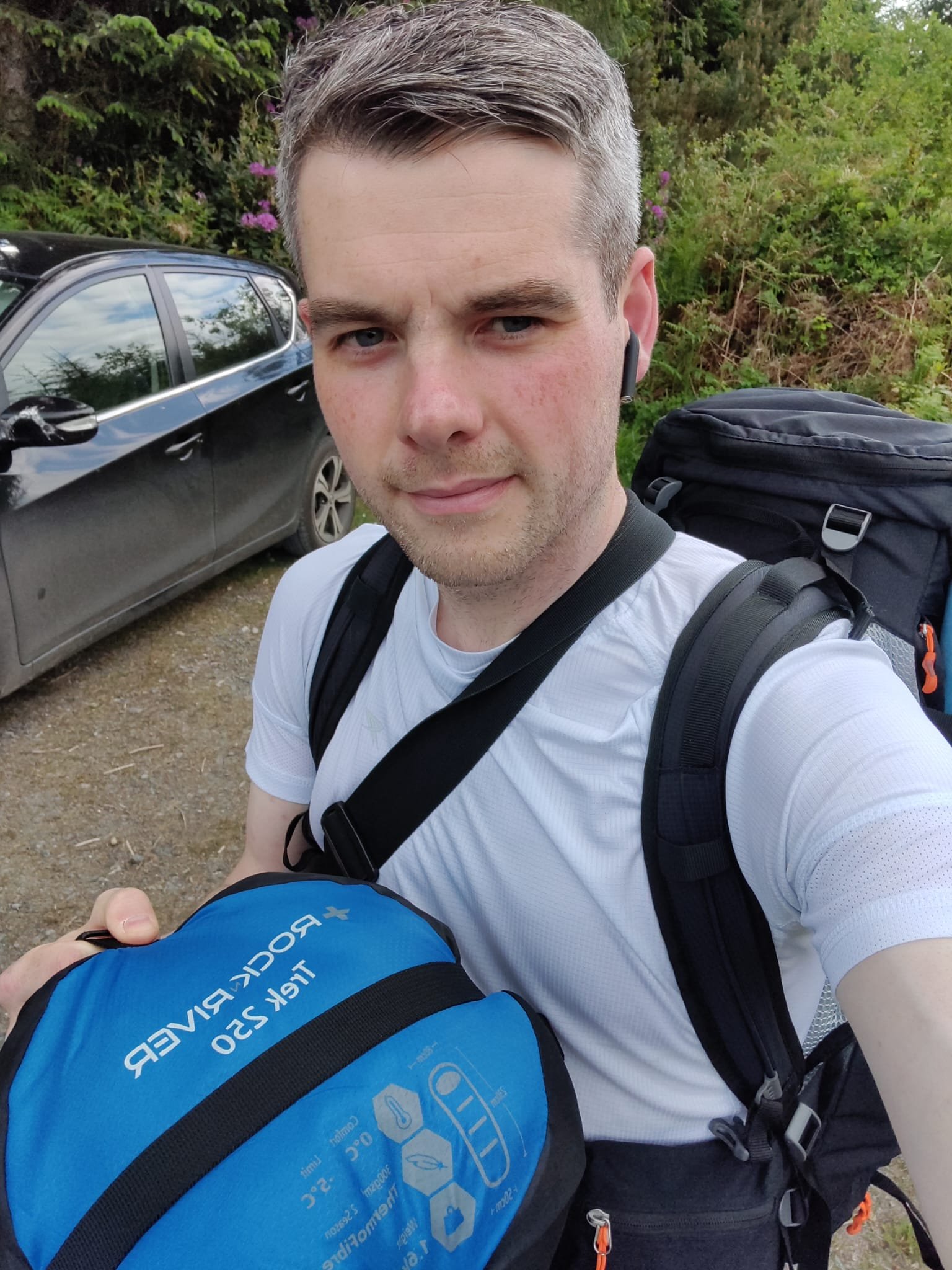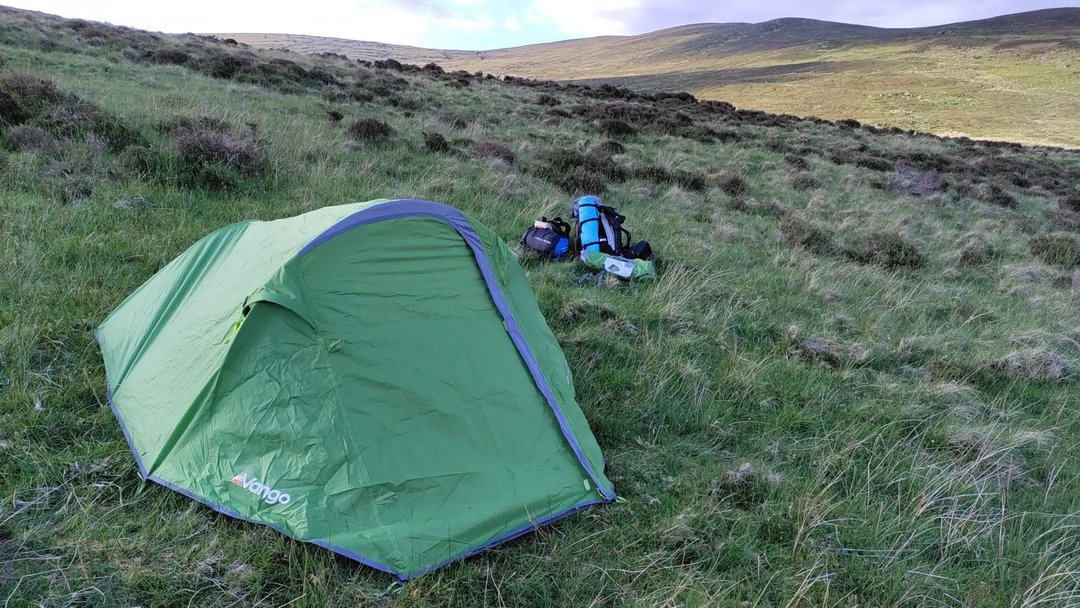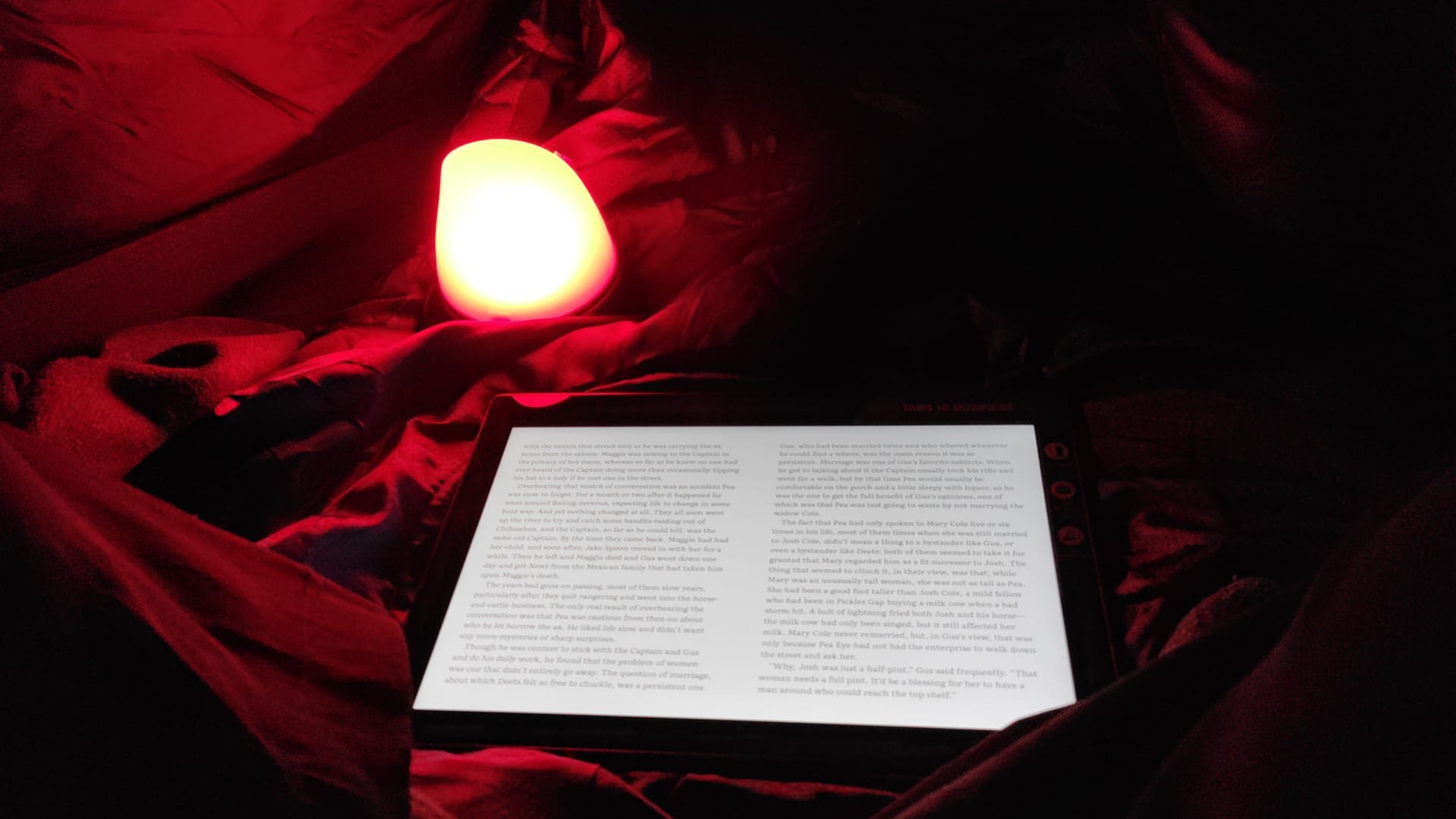Wild Camping in the Galtees
Wild Camp in Boolakennedy
26th May 2023
My First Wild Camp
“Writing a blog is an exercise in putting words to experiences. I think I’m going to find that hard to do this time.” (Field Journal - Excerpt One - sitting on a stone beside a stream)
I parked the car in the same place as last time and wandered along the trail. The woods either side of me didn’t quite shield me from the high sun. This time the weather was warmer, and this time I met a couple of local farmers when I reached the maze of animal pens which would grant me access to the mountains. The two men were working on a bit of fencing, possibly repairing it. Though nervous, I was glad of the opportunity to ask permission to use the gates and to walk and camp on the land.
“You can go whichever way you want,” one of the men said with a wide hand gesture, and I thanked him.
I was in Boolakennedy again. I followed the very same route as my last hike, contouring around Knocknabawn towards Poll an Eas, only this time the backpack was heavier. The tent and sleeping bag, the extra food and water, gave it a lot more heft. Let’s just say I knew I was carrying it. The plan was to camp somewhere in and around where I had finished up last time, near the two booley markings I hadn’t reached.
When I arrived at the large booley visited last time, I trekked past it into previously uncharted territory, through knee-high brush and beyond the bend in the stream where it turns west. I hoped it wouldn’t be this thick underfoot everywhere, or I would have difficulty finding a spot to pitch the tent. Thankfully, as I moved onto an area of open mountain which the map calls Cnoc na Laidhre, I could see the odd patch of green dotted sparsely around. I honed in on a particularly smooth-looking clearing and was absolutely delighted to get the bag off my sweaty back. I treated myself to a few slugs of water, although I vowed not to fill my belly until the tent was up. That gave me the motivation I needed and it only took me minutes to pitch. It was then time to feed my face!
“The stream doesn’t lack for words. Or certainly not voice. It surges on and on, never ceasing, as if the water is the mountain’s lifeforce, veined into its dykes and valleys. Can I tap into its consciousness? Can I be fluent?” (Field Journal - Excerpt Two - sitting on a stone beside a stream)
With the tent pitched and stomach satisfied, I set about gathering up my camera, tripod, and a jacket, and headed up the gentle slope towards the previously unreached booleys. The first of these sites turned out to be a fairly non-descript collection of stones. The other was much more noticeably a booley hut, its size and shape about average as compared with others in the Galtee mountains. Its walls were quite overtaken with grasses, and the fact that the sun had by this time dipped behind the looming Farbreaga, meant that the light was that bit dimmer up there than it was down by the stream. Unfortunately, I didn’t get anything particularly interesting.
On the way back down to the tent, I soaked in the views of the Knockmealdowns in the distance, behind a little “V” created by the stream and the slopes rising either side of it.
Back at home base, I unburdened myself - leaving the camera and tripod in the tent - and ambled down to the banks of the stream. I took my field journal and a pen with me. I would record any thoughts in the event that inspiration struck. I felt a greater skip in my step with less baggage, and a sense of winding down into the evening. The duties had finished and I could give myself over to the remainder of the day.
I was choosy when selecting a stone to sit on. Once I’d found the right resting spot, I took up position. From my perch, I watched and listened to the water babble over the stones and debris on the bed of the stream. A bubbling, busy sound. After a few moments the water’s clamour relaxed into the background.
I took out my journal and put pen to paper.
The stream at Poll an Eas
“The thing about flowing water is that it’s so relentless, so reliable, that even its noise and power become agents of calm.” (Field Journal - Excerpt Three - sitting on a stone beside a stream)
Back at the tent, I treated myself to some chocolate, some water and got my heavy boots off and my flip flops on. I was fairly chuffed that I thought to bring the flip flops, predicting that it would be nice to have lighter footwear in and around the campsite. I put on some background music and charged up my various devices with the power bank. Once I was settled in for the night I read a couple of chapters of a western I’m currently reading - Lonesome Dove by Larry McMurtry. The western was quite a vibe in the tent. I settled into the sleeping bag and got comfortable as night gradually fell. But I would not be going off to sleep just yet. There were other plans before that.
Perhaps the reason my mind is struggling to find the right words is because there are no right words. I don’t mean to suggest that this experience is too amazing for words – hopefully it’s not coming across that way. It’s almost the complete opposite. In fact, there isn’t anything special at play here. It’s an exercise in simplicity. I am sitting, standing, and ultimately will be sleeping, on a green patch of earth surrounded by scrub and stone, with the hills gently rising behind me, and a stream before me, its water coursing through the earth whether I sit here or not. Away from the stream, nearer my tent, there are virtually no sounds. The very odd bird song, but not as many as I’d expected. No other animal sounds to speak of. The wind so light it barely rustles the fabric of the tent. Nothing for me to do, nowhere to be. Time an irrelevance until morning. Might as well just sit and observe. Sit and listen. Can I find the words for this? Do I really need to?
(Field Journal - Excerpt Four - sitting on a stone beside a stream)
As I sit back in the tent with the “door” slightly open, watching the light give way to dark with acceptance, I realise I don’t need to find a collection of words. Let the light fade. Let the darkness come.
This experience is small, not special and life-changing. Its smallness is its beauty. Does it really need any kind of linguistic flair to bring it to life? As I read back over my journal’s notes about the stream’s voice, about the consciousness of water, about the search for words, I begin to understand that it’s not words I need at all, but a single word. The feeling is so simple that one syllable will do.
Peace.
Night Time Photography
Leaving the tent again after midnight felt unnatural and I was a bit groggy. It was also chilly enough to require my jacket and gloves. This would be my first time trying out night time photography in earnest. I had done a few bits in the past but never really in fully dark, remote locations without the interference of urban lights. I was excited to see how it would turn out. Regrettably, I had forgotten to pack my Fuji 50mm lens, which is sharper and performs much better in low-light conditions than the lesser quality Viltrox 40mm lens I had brought along. Still, I was sure I could get some interesting results. Here are some images produced, the first depicting the tent with the moonlight over its shoulder, and the second one capturing the distant lights beneath the Knockmealdowns.
The tent beneath the moon and stars
Distant lights beneath the Knockmealdowns
The Next Morning
The alarm was set for 4am - a cruelly early time considering I probably didn’t get off to sleep until 1am at best. This was to allow myself enough time to climb Monavane - a nearby peak at a lower altitude than Farbreaga - in time for sunrise. As it happened, I was so out of it that I snoozed the alarm a few times, until about 4:40. Only then did I muster the will to rouse myself. Nibbling on a flapjack for breakfast, I opened the map and plotted my route up Monavane. I would have to cross the stream somewhere north of my campsite (which you can see marked in blue in the image below) and then head northeast towards Monavane.
Monavane comes in at 629 metres and has a nice rocky feature near its summit, known as Diarmuid and Gráinne’s Bed. There are many rocky features throughout Ireland which share this title (based on an Irish folk tale), so it’s certainly not unique, but I found this location quite impressive. That was probably helped by the lowness of the light at the early hour I reached it.
To get there, I headed north of my campsite. The stream I had to cross was in a deep dyke, with fairly steep banks and occasional crags on either side. If you look at the first of the two maps above, the little black symbols that look almost like portal dolmens along the stream, are representative of crags - essentially steep cliff-face-style drops which are best avoided! Thankfully I found an area where I could descend, cross the stream by stepping on a couple of sturdy stones, and managed to find a path of ascent on the other side too.
Once I had made the other side, it was a northeast heading towards the summit of Monavane. I quickly realised that I had missed the actual sunrise, of course, due to my sleeping in! Nevertheless, the sun was still behind the hills from my relatively low vantage point and I could imagine how sensational the low sun would still be from the top of Monavane. Once I had progressed up the hill enough to reach a little crest southwest of the summit, the sun revealed itself for the first time, and there were low clouds hovering like sleep on the flatlands below.
Sunburst en route to the summit of Monavane
I reached the summit within an hour or so. The sun had risen probably half an hour earlier at least, but it was still stunning up there. I spent a lot of time photographing Diarmuid and Gráinne’s bed. It made a wonderful foreground feature with the sun and the foggy flatlands making up the background.
Diarmuid and Gráinne’s Bed - Monavane
Diarmuid and Gráinne’s Bed - Monavane
As always, the trek back down off the mountain was much smoother. I was probably back at the tent within forty-five minutes. Getting the tent down was a bit trickier with the sun now in a higher position and the midges having found my campsite! They were eating me alive whilst I was packing away the tent. I tried to see the positive side - the fact that they hadn’t bothered me at all the previous evening - but I also promised myself I would buy something to stave them off next time.
I was sure to leave no trace behind me as I departed the campsite. The bag was ever so slightly lighter with less food and water than the trip out, but heavy nonetheless. I was packed up and ready for the walk back to the car just after half seven in the morning, which meant I would easily be back to the car before nine o’clock.
Just before heading off, I got a message from a friend asking, “well, did you survive?”
On the walk back I also got a text message from my father asking how I had gotten on. It was nice to know people were thinking of me whilst I was out there, and I appreciated the messages.
Next Time
There are few forms of exertion in life where you think, immediately after finishing, that you’d like to go straight back out and do it again. I was tired, for sure, but I was also absolutely certain I would be heading out again next weekend. I had the wild camping bug!
There were some learnings of course - things I would do differently next time. And I don’t just mean investing in anti-midge spray! My tent had been on a very slight incline, which meant that once I was in the sleeping bag I was liable to slip down towards the door of the tent. In fact, when my first alarm jarred me awake at 4am, I found my body had slipped to the front of the tent and my knees had folded up quite a bit, leaving my legs stiffer than they might have been. Next time, I would find a flat pitch.
I just about had enough water left for the morning. Without refilling from the stream (which I wasn’t entirely sure about doing without a water filter), I had to take sparing sips on the way back to the car - tough under the heat of the high morning sun. I was happy to get back to the nearby town of Cahir and get a cold bottle of water straight into me! Next time, I’d bring about 500ml more water.
If I was to pick further holes in my choice of camping location (besides the incline), an obvious complaint would be that I didn’t have a view of the sunrise or sunset from my campsite. I wasn’t really high enough for that, and there were hills between me and the horizon. Also, I was on the eastern end of the Galtees. If I wanted to watch the sun go down from my tent, I would be better served on the westernmost end of the Galtees. I would have to revisit an area I’ve been before - Temple Hill and its environs. If I can find a spot at a reasonably high altitude up there with nothing between me and the horizon, I think that would be the ideal location for my next camp. I look forward to reporting back to you on that next month.
Thanks for reading. Please feel free to use the comments section below with any thoughts or feedback.
All the best,
Alan.



























